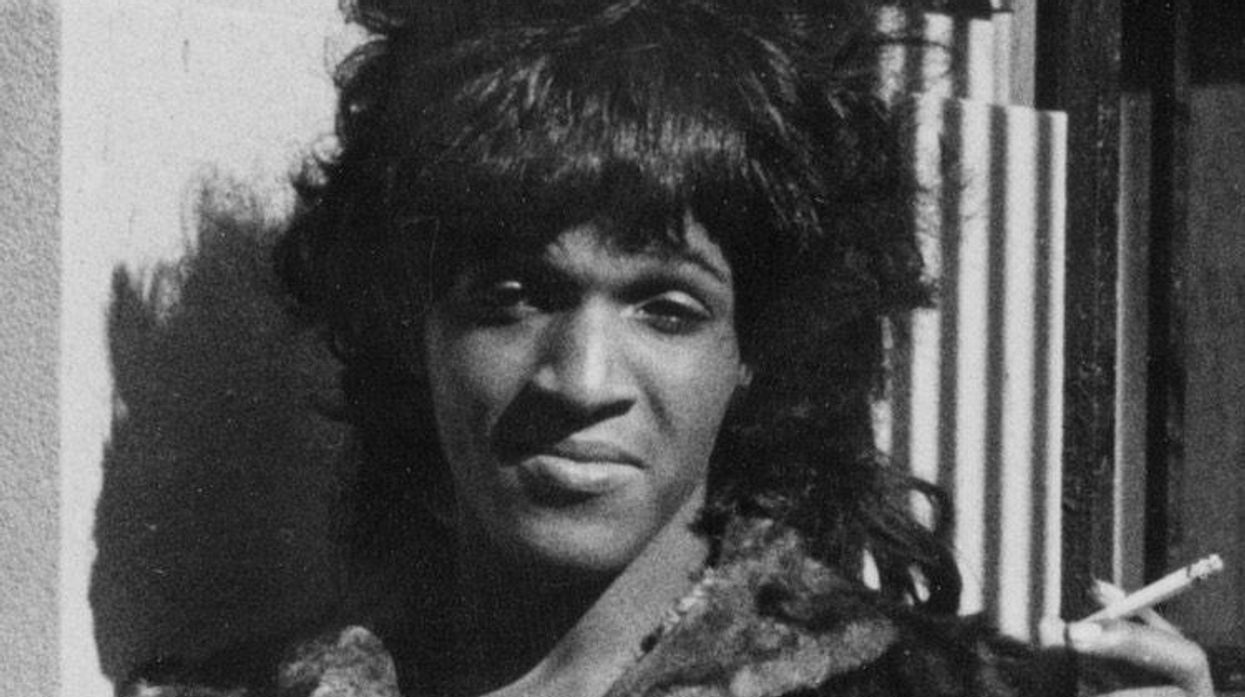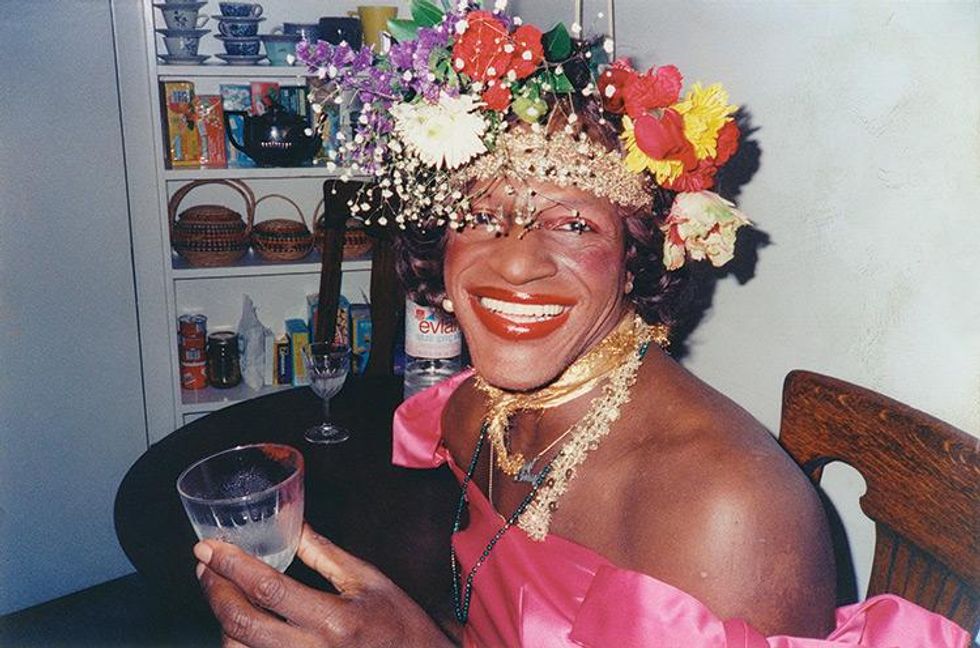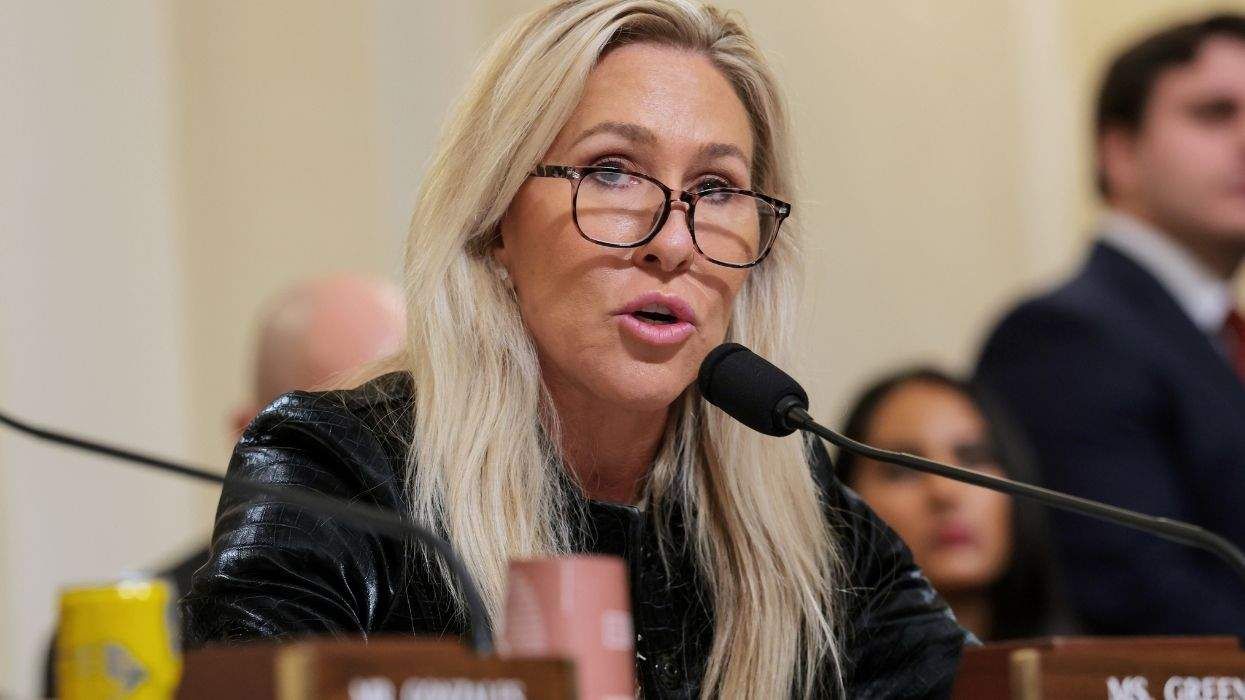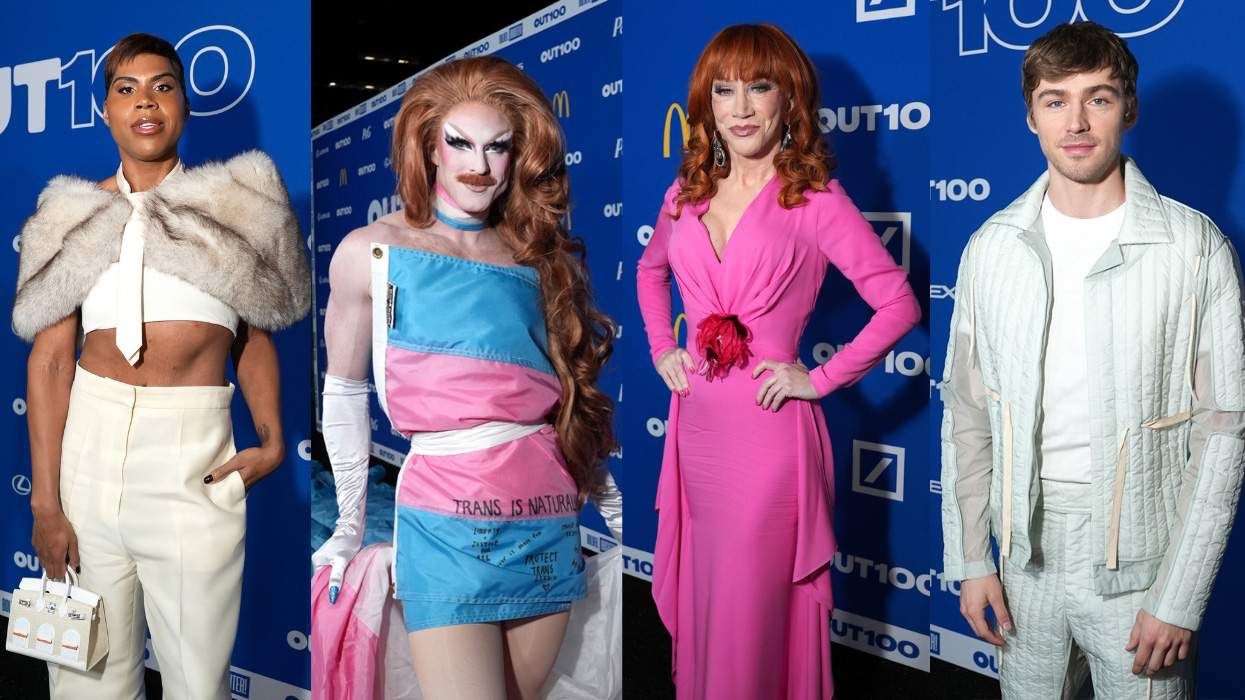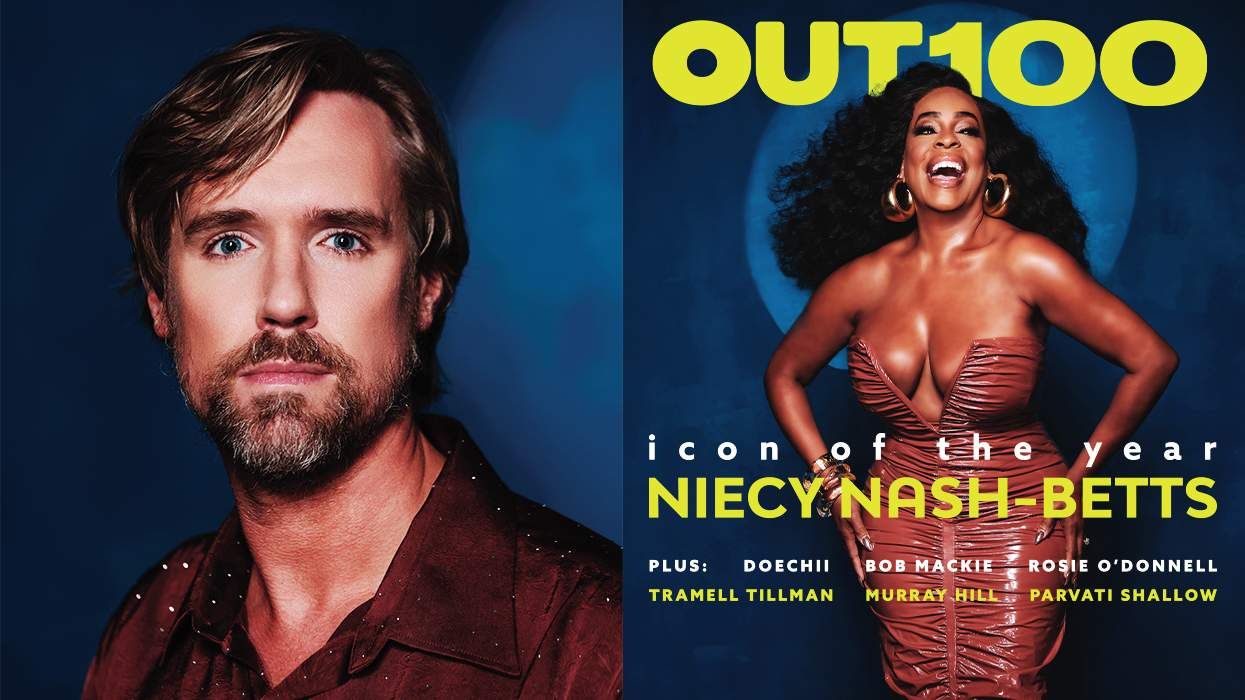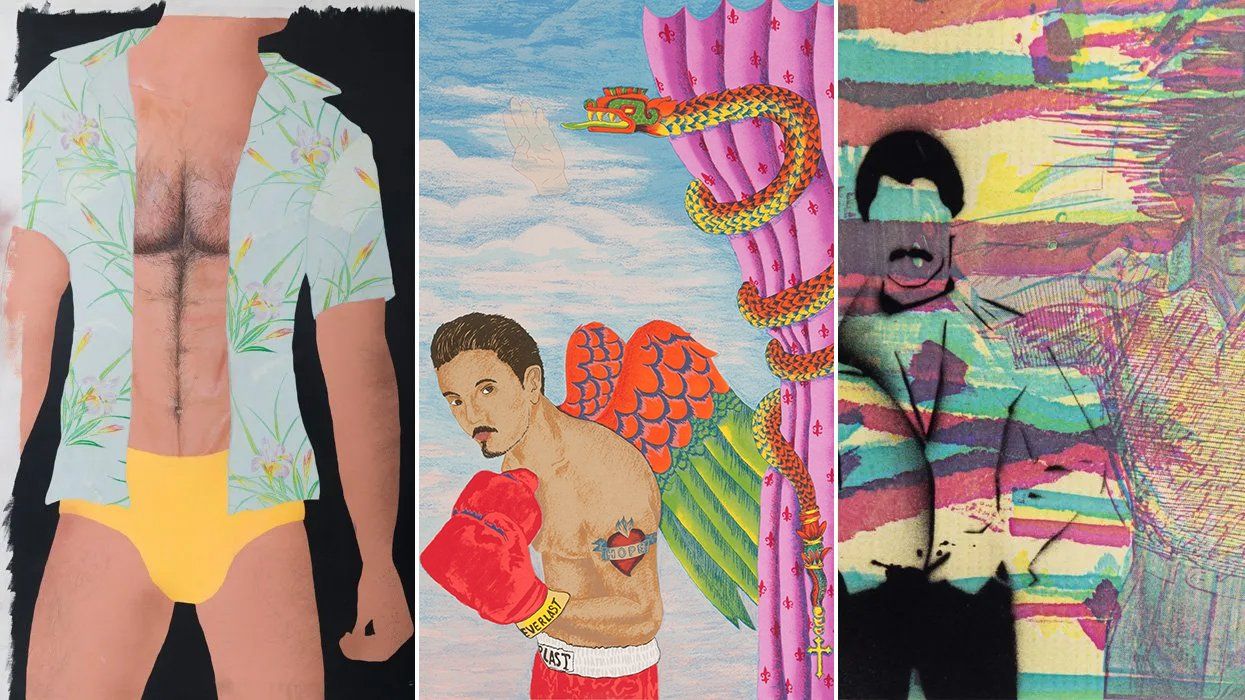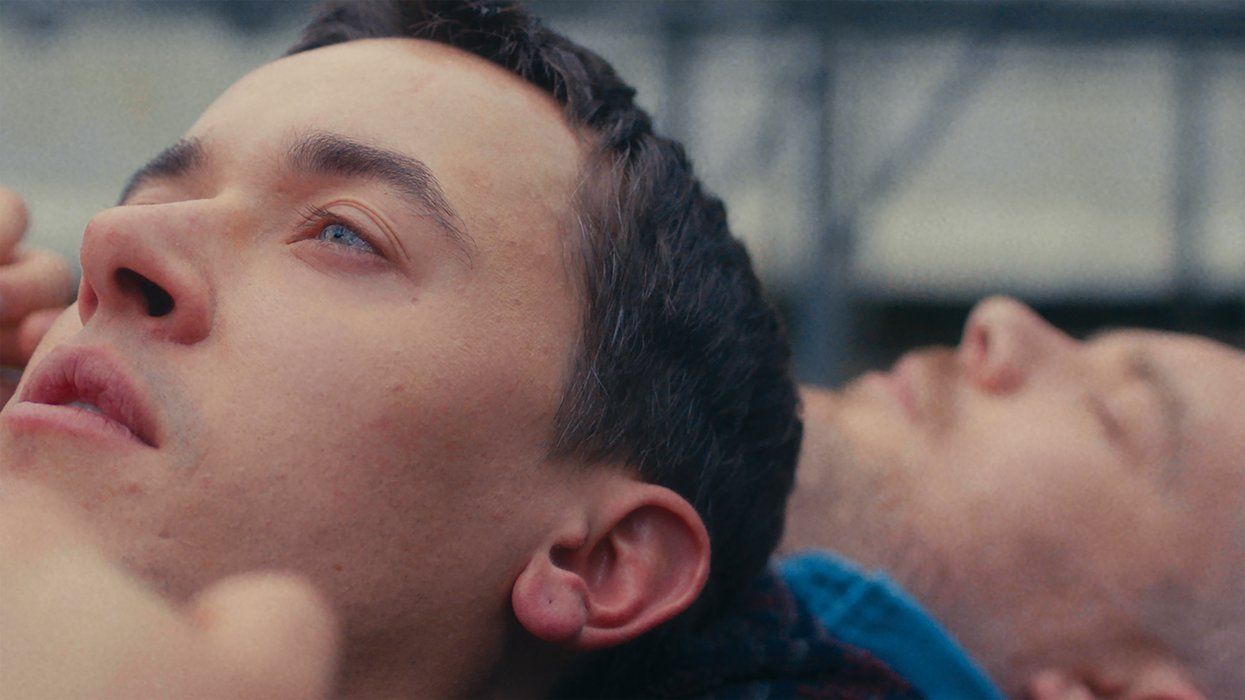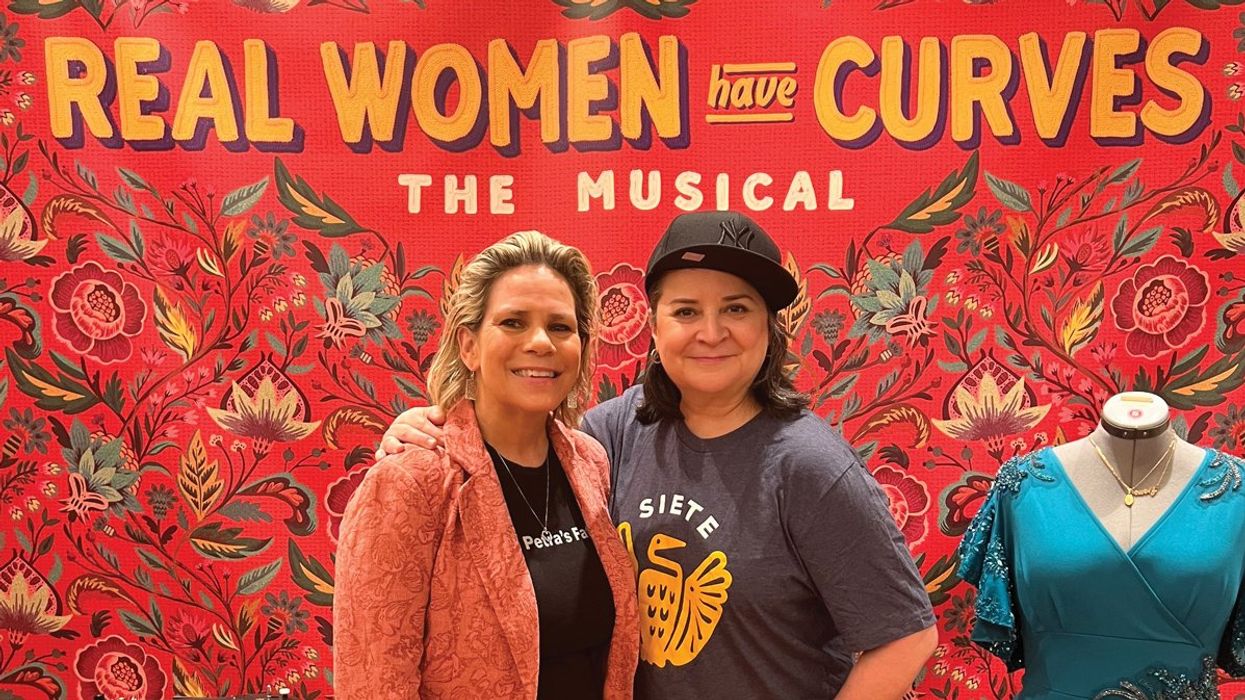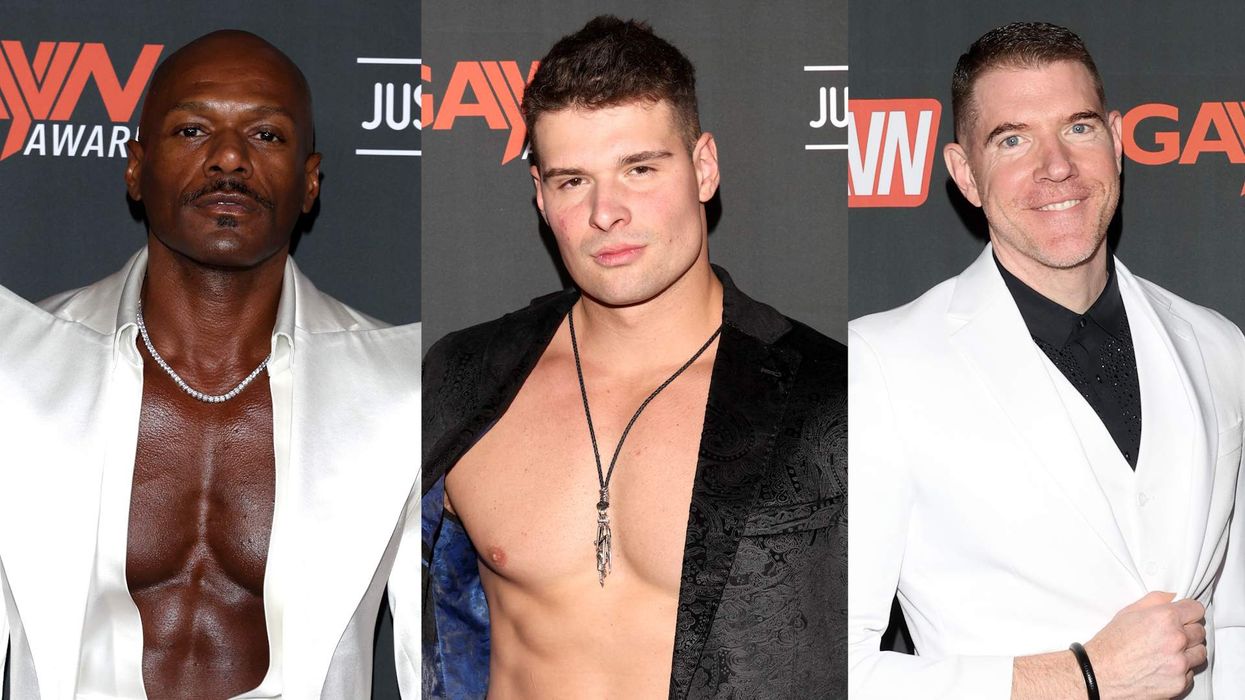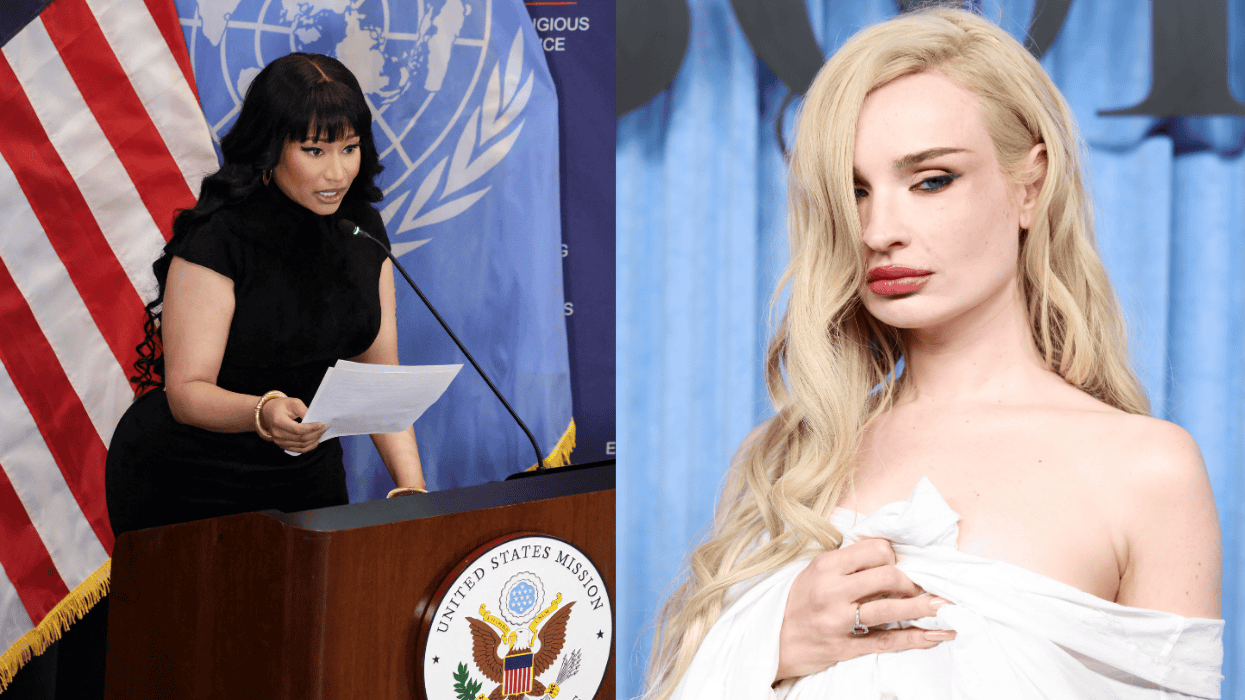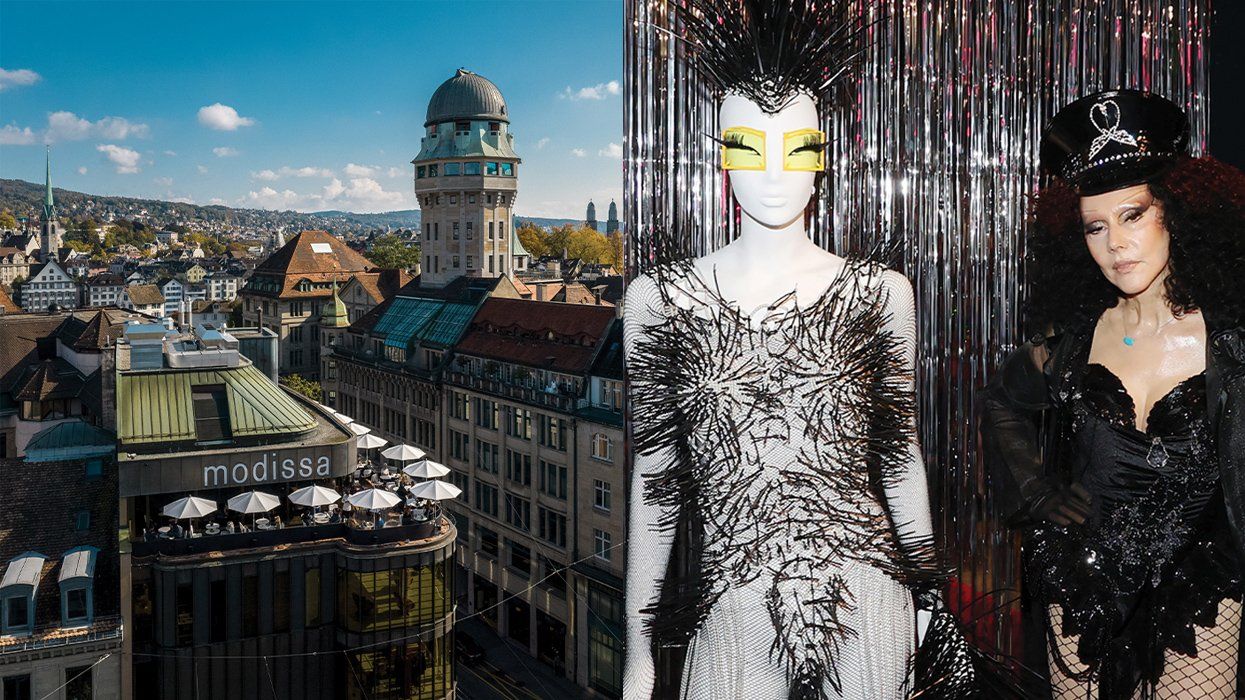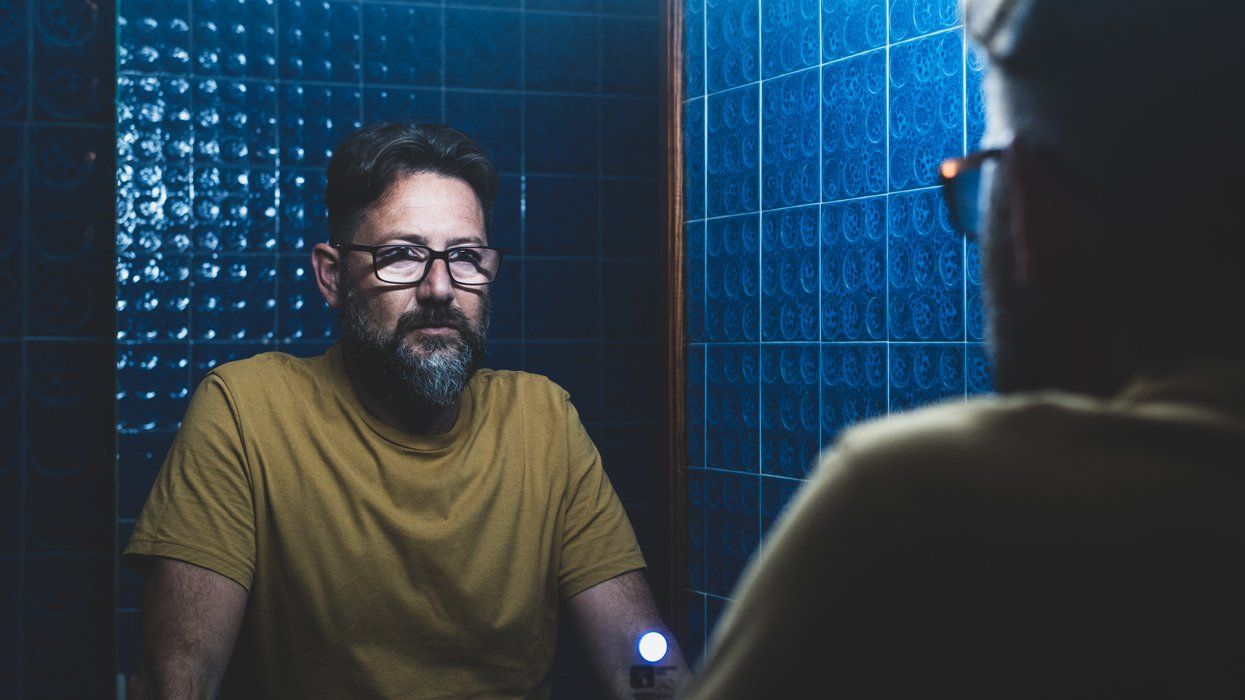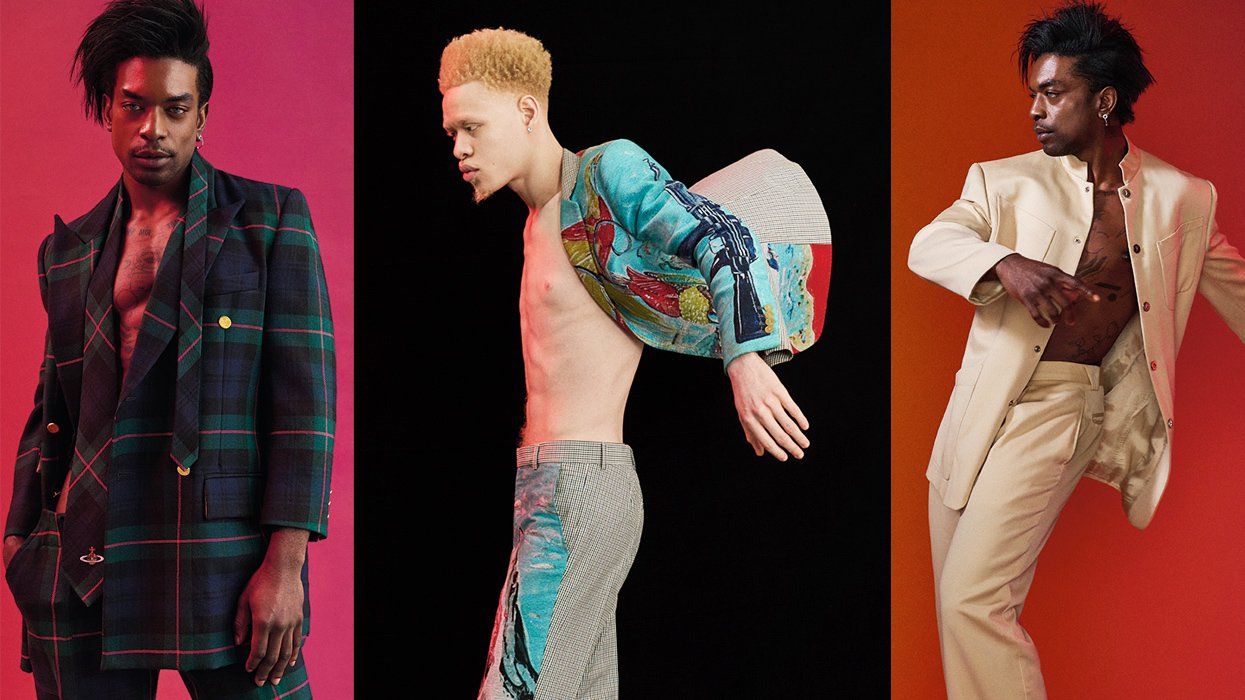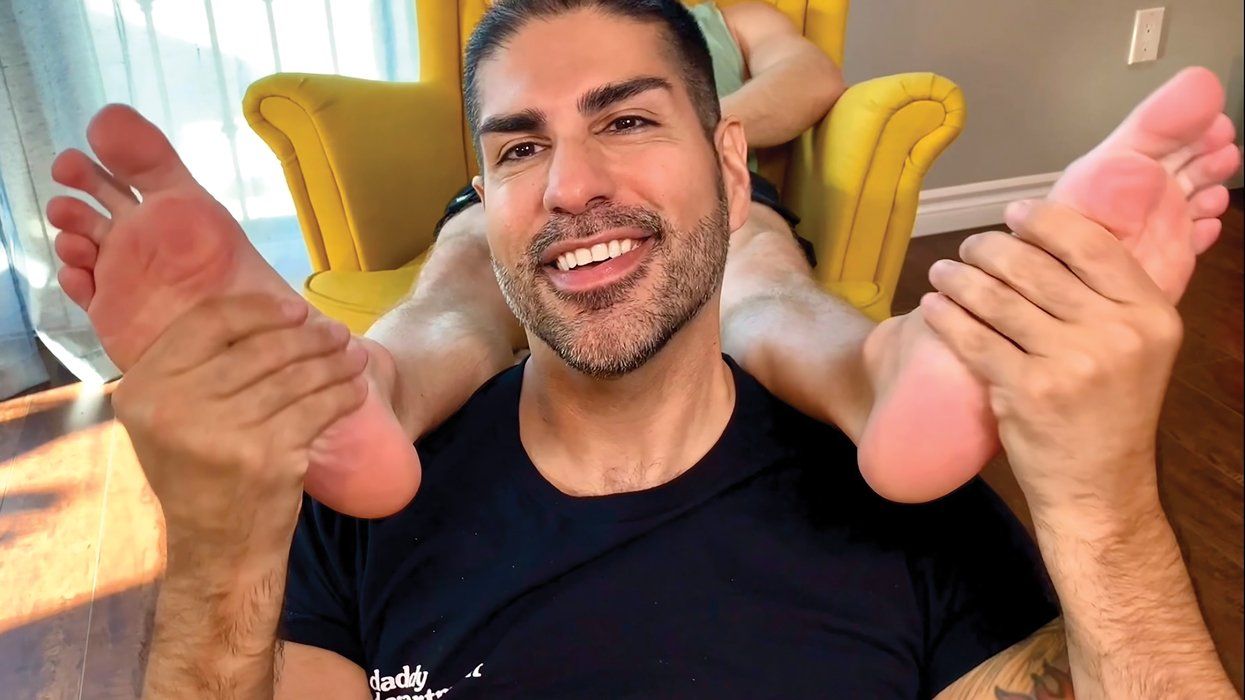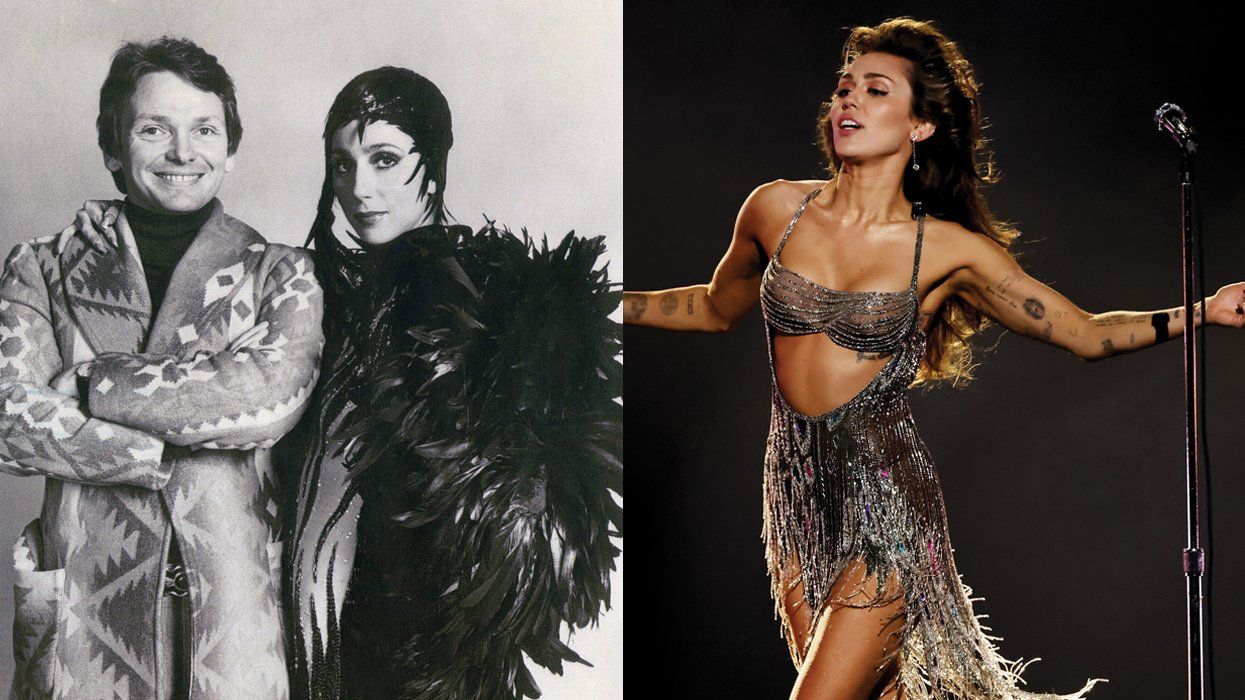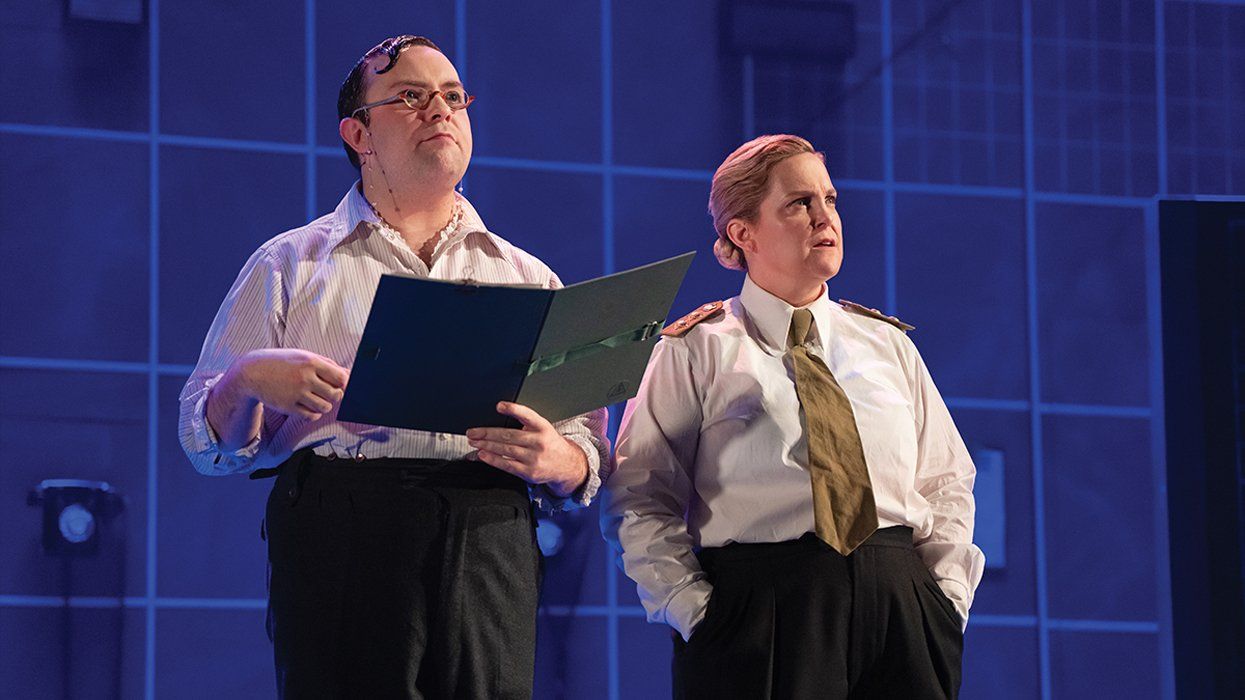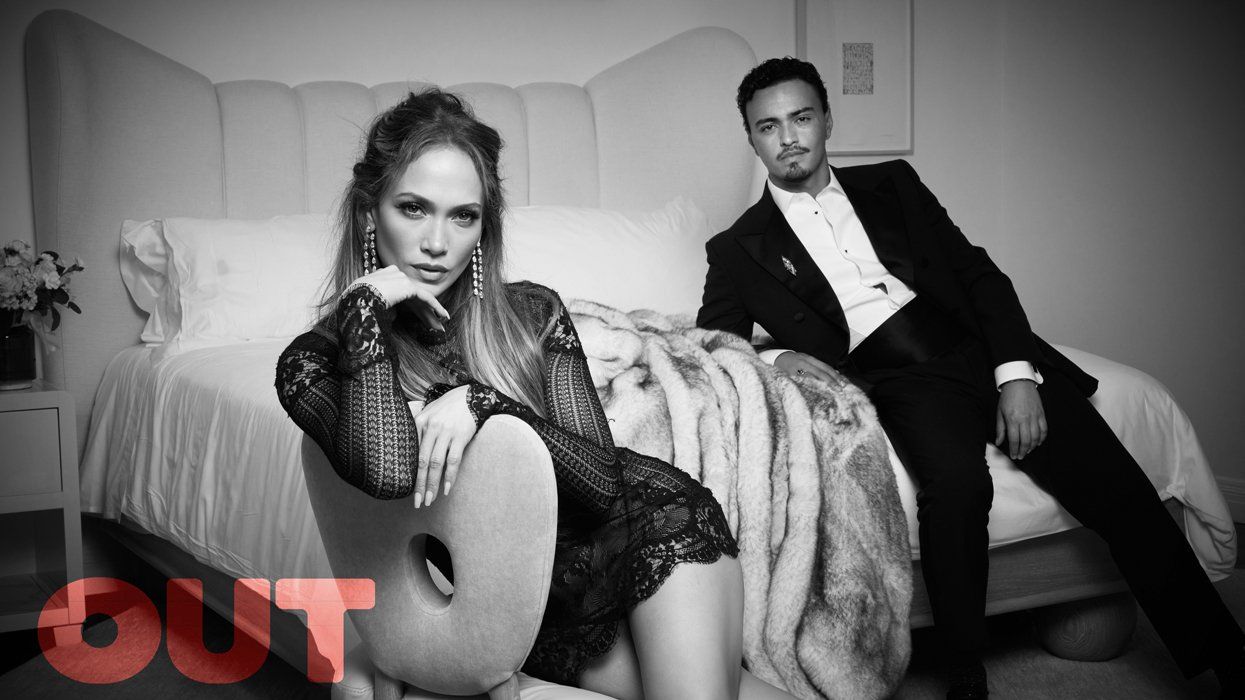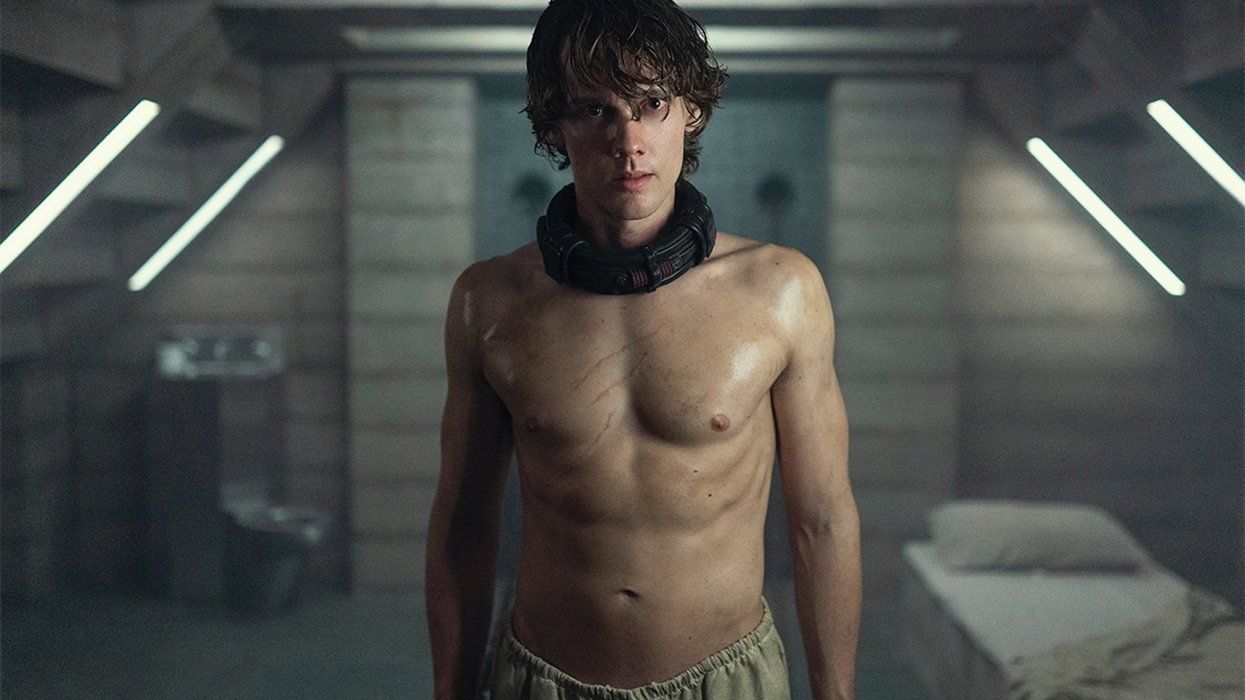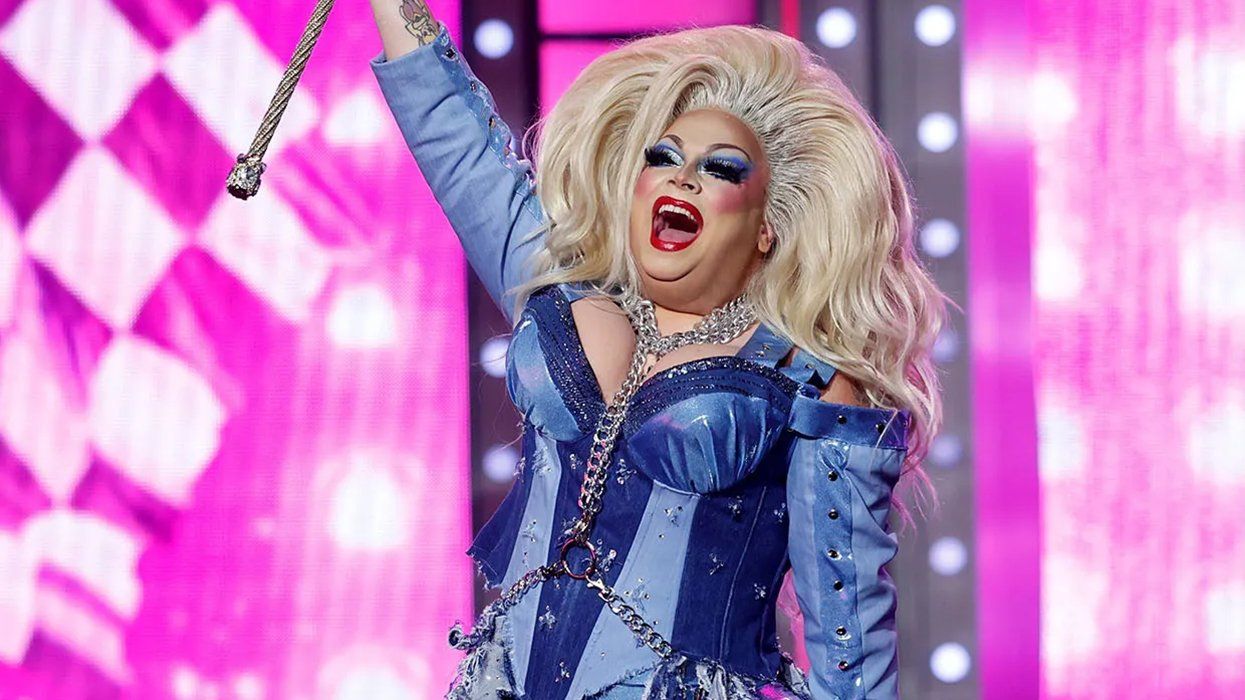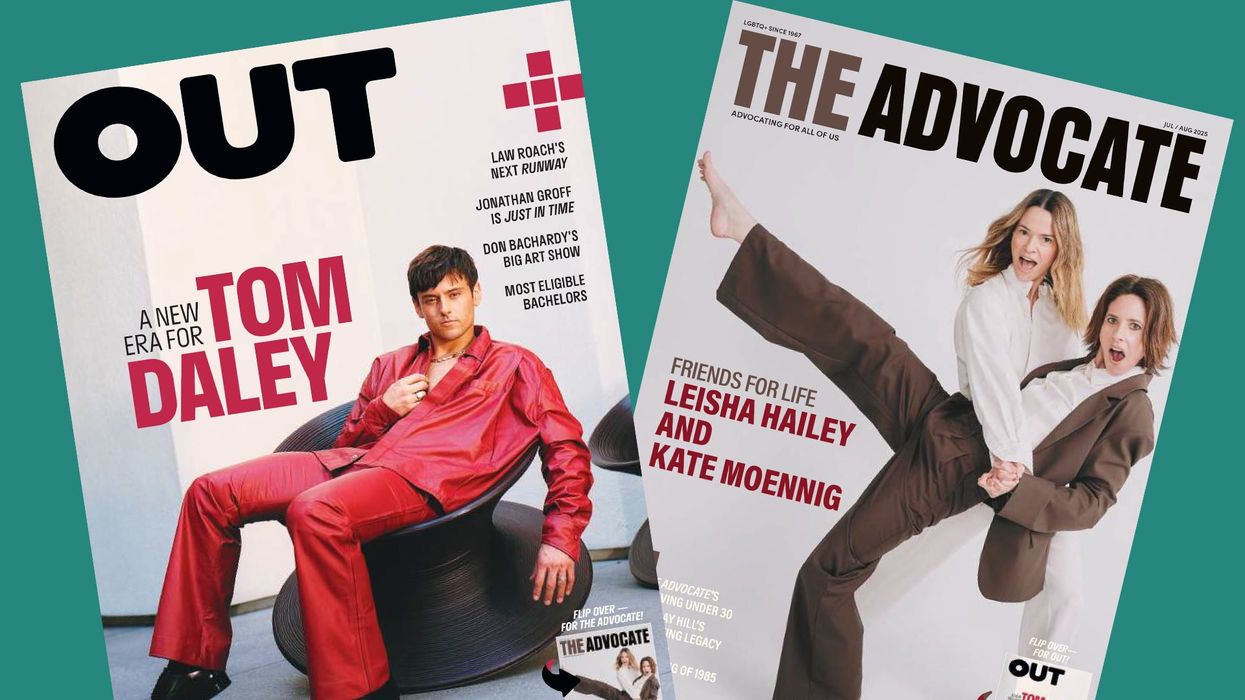--Perhaps my favorite image of Marsha P. Johnson--and there are a lot to choose from--comes from a 1970 Gay Liberation Front protest at Bellevue Hospital, where doctors were using shock treatments to "cure" homosexuals. In an oversize fur coat, Johnson leans against the corner of a building, a desultory cigarette hanging from one hand. In the other, she holds a poster with simple block letters reading, "POWER TO THE PEOPLE."
Which people? All people. But particularly her people: queer people, street people, activists, artists, trans women, drag queens, sex workers, the poor, the homeless, and those who struggle with mental illness. At a time when being any one of those things might land you in jail or in the morgue, Johnson was all of those things tied up in a messy package, with a gorgeous, trash-couture bow on top.
It's not the poster that makes the picture so endearing, though. In fact, it's something missing from the photo that draws me to it. Run a Google image search on Johnson and you'll get page after page of results showing her with a smile as wide as 14th Street. Smiling in a club; smiling on the corner; smiling in a photo by Andy Warhol; smiling on stage with the Hot Peaches; smiling while her best friend Sylvia Rivera throws her fist up in the air; smiling even when the rest of her face looks exhausted and done; smiling on a promotional sales tag from the Hot Topic for hipsters, Urban
fucking Outfitters; smiling, smiling, always smiling.
But not at Bellevue. Diana Davies, the photographer, captured Johnson at a moment when her mask was down. There's a flicker of joy in the upturned corners of her mouth, but in 1970, after some 25 years of smiling, that was just the shape of Johnson's face. Her smile was her sword and shield, and to be who she was meant always coming armed and armored. That smile kept her alive--until it didn't.
It might seem odd to suggest that Davies--a white, cisgender queer woman known for documenting the early gay liberation movement on the East Coast--could capture Johnson in a vulnerable moment of repose. After all, if there's one thing we're supposed to know about white lesbians in the '70s, it's that many of them were viciously transphobic separatists who had no room for trans women. Certainly, that virulent strain of gender-fascist "feminism" did exist, and it still exists today. But it's hardly the full story. Johnson got along well with lesbians, and even attended a few meetings of the Daughters of Bilitis, the first national lesbian organization in America. In the activist gay world of the 1970s, both lesbians and trans women (many of whom used the word "transvestite" to describe themselves) were often marginalized for their gender.
"Gay sisters don't think too bad of transvestites," Johnson said in a 1971 interview collected in Karla Jay's book Out of the Closets: Voices of Gay Liberation. "Gay brothers do." When I look at Davies's photo, I like to think that maybe this is the face that Johnson saw in the mirror in the morning, before girding it with that smile that enabled her to survive a world that could barely even acknowledge her existence, let alone celebrate her brilliance.
I've been looking at that photo a lot recently. Every time I hear about another murdered trans woman of color (at least a dozen times this year already), I pull it up. Every time I see a new homage to Marsha P.--a documentary, a short film, a paean to her presence at the Stonewall riots--I look at it again. I'm trying to see how we got here, to a place where we can memorialize Johnson as the "Saint of Christopher Street" yet ignore the consistent violence that her trans daughters and granddaughters still face. How we can fetishize Johnson's presence at Stonewall, yet ignore the demands she made of the queer community and the world at large.
I think her smile is a big part of that story.
Marsha P. Johnson was born in Elizabeth, New Jersey, on August 24, 1945, near the end of World War II. The "P" in her name stood for "Pay It No Mind." She lived most of her life in the nimbus of New York City, but she always maintained a close, if fraught, relationship with her family back in Jersey, according to Al Michaels, her nephew.
Now 36, Michaels remembers that it was "like a holiday" whenever Johnson came over, and that kids flocked to her because she brought them treats: beads and candies and flowers. Her mother would make Johnson put on men's clothes when she entered the house, but invariably, Johnson would have parted with them by the next time she visited. "She'd give you the shirt right off her back," Michaels says with a laugh. "'You like it? Here, you have it.'" Johnson's grandmother may have disapproved, but it was always with an undercurrent of love, Michaels says. And when Johnson had one of her spells--like the time she was reported lost in Hoboken wearing only her underwear--her family always picked her up and brought her home or to the hospital.
If every day was like a holiday with Johnson, however, then real holidays were extra. "They'd walk up from the train, Marsha and like 15 or 20 of her friends," Michaels says. "Our house would be full of people dancing." Everyone who ever met Johnson remembers this aspect of her personality: her gregarious, generous nature, which made you feel like you were at the coolest party in town.
And often, Johnson was at the coolest party in town. She was a member of the avant-drag performance troupe the Hot Peaches, with whom she toured America and Europe performing comical songs and spoken-word poetry. She was photographed by Andy Warhol, who also painted her as part of his "Ladies and Gentlemen" series of trans portraiture. One time, recalls Michaels, when he was DJing in New York City, he pulled out an Earth, Wind, and Fire album only to discover an image of Johnson in the album artwork.
Johnson, as seen in Netflix's The Death and Life of Marsha P. Johnson
But Johnson was an icon whose influence was felt far beyond New York. Filmmaker Stephen Winter, who recently worked as a consulting producer on David France's new documentary The Death and Life of Marsha P. Johnson (premiering October 6 on Netflix), remembers hearing about Johnson in 1990, when he was a newly radicalized 20-year-old involved in ACT UP Chicago. "People gotta understand," he says over the phone one afternoon, "before there was Snapchat and Facebook, queer TV or gay characters or gay books, there was Marsha, walking around."
Johnson is emblematic of what black queer feminist thinker Alexis Pauline Gumbs describes as the "never straight": those queer pioneers who were unable or unwilling to hide their differences, and thus forced queerness to be publicly acknowledged wherever they went. Almost always, those differences manifested themselves through gender, which is why time and again gender-variant people have been at the forefront of queer rebellions, like Stonewall.
Perhaps the least important, but most discussed, aspect of Johnson's life is what she did or did not do during the Stonewall riot. Almost every modern depiction of the riot includes Johnson, or a character obviously modeled after her. She is the only real person to be portrayed in Roland Emmerich's underwhelming 2015 white fantasy Stonewall. According to Johnson, in an interview she gave to writer Eric Marcus about that night:
I was uptown and I didn't get downtown until about two o'clock. When I got downtown, the place was already on fire, and there was a raid already. The riots had already started.
Johnson hands out flyers at NYU in the 1970s
That's riots, plural, because "the Stonewall riot" was an anti-police insurrection that lasted six days. In our rush to pinpoint the first punch thrown, we have lost the vast scope and meaning of that rebellion. And the fact that it followed other LGBT anti-cop riots that happened in the late '50s and throughout the '60s, including the Compton's Cafeteria riot (in 1966 San Francisco) and the Cooper's Donuts riot (in 1959 Los Angeles). In all three incidents, a community of trans women and poor hustlers was at the forefront of the uprising. Johnson may not have hurled the first shot glass at Stonewall, but she was a major force in creating the visible queer community that rose up that evening. Her fearless presence announced itself in her Goodwill dresses and the headpieces she crafted from flower district castoffs. If silence=death, then Johnson--in a very literal way--gave us life.
But being a legend doesn't pay the bills. Johnson lived on and off the streets for most of her life, and relied on charity and sex work to survive. For more than a decade, she stayed in the New Jersey apartment of gay activist Randy Wicker, who would become one of her closest friends. But her best friend, for nearly her entire life, was Sylvia Rivera. According to Rivera, the two met on the streets when Rivera was 12 and Johnson was 18. Together, they conceptualized the idea that trans people were a marginalized community, separate from but related to the larger queer world, and that they had their own needs, which were often neglected or sacrificed even as they put their bodies on the line as foot soldiers in the "gay revolution."
Shortly after Stonewall, Johnson and Rivera founded Street Transvestite Action Revolutionaries (or STAR) and created STAR House, a short-lived, unfunded communal space for trans women who'd been living on the streets.
STAR had a radical platform that would not seem out of place coming from today's Movement for Black Lives. It included "free gender expression, an end to prison injustice and homelessness, and the creation of an inclusive community that rejected binding definitions of gender and sexual identity," according to Stephan L. Cohen's book The Gay Liberation Youth Movement in New York.
What doesn't that platform sound like? About 90% of the organized LGBT rights movements today. Despite the fact that nearly all queer political groups lay claim to Stonewall as a mythic origin point, the moment at which "our" movement began, very few seem willing to embrace the radical politics of the women who were there.
"Marsha was naming these things precisely and powerfully for a long time," Reina Gossett explains. For years, since she was a young community organizer at the Sylvia Rivera Law Project, Gossett has been working to unearth and restore Johnson's legacy. Together with filmmaker Sasha Wortzel, she is the creator of Happy Birthday, Marsha!, a forthcoming, somewhat ahistorical narrative short film that imagines Johnson in the hours leading up to the Stonewall riot.
Rivera and Johnson are almost always mentioned together, but Rivera is often credited with their political thinking, while Johnson is presented as her sassy black sidekick. As usual, the reality is more complicated. "Marsha definitely had her own political imagination," Gossett says. In that same interview in which Johnson called out the transphobia of gay men and mentioned her alliances with lesbians, she also advocated for a queer movement that centered on anti-prison and anti-homelessness activism. This was two years before Sylvia Rivera's infamous speech at Pride in 1973, when she was booed for railing at the white, middle-class complacency of the movement.
However, Gossett isn't interested in arguing about who had which idea first. "Political imagination and freedom dreams don't happen in a silo," she says. It takes a community, because we have to be able to see that our issues are shared with others, and that they are created by systemic forces, not personal failures. Why, then, does Rivera get all the credit? The truth is, it's not about who said what, but about who we are able to hear.
"Marsha survived by using the classic trickster mode," says Winter, an expert on the archetype of the queer black trickster. His latest film, Jason and Shirley, is a reimagining of the first such character in cinema, Jason Holliday, from Shirley Clarke's experimental 1967 documentary, Portrait of Jason.
"Marsha allowed people to think she was dizzy--and she was a little dizzy--to ensure her survival," he says. Showing anger, for a black person in America, is the quickest way to get censured, ignored, punished, or killed. The one exception to that rule? The sassy black friend, who can get a little angry, so long as it's in a funny, you-go-girl kind of way. In that case, anger can even be rewarded (at least in a limited sense).
There's a scene in The Death and Life of Marsha P. Johnson in which this dynamic plays out, as a drunken gay white man gleefully accosts Johnson on Christopher Street. Even as he tells her how brave she is, he also mansplains to the camera--and Johnson herself--all about her gender. Johnson's laughing protests--"How do you know all this?" she asks pointedly--go ignored. It's a perfect encapsulation of how a loving embrace can also be a straitjacket.
"White gay culture has always found a place for black feminine joy," Winter says, "as a way to express their own pain and suffering." Thus, Johnson gets turned into a symbol for "all" queer people--but "all" almost always means the universalized experiences of white gay men. Johnson's specific pain, her specific suffering, takes a back seat. It's why we know Johnson's smile, but not the thoughts that were running through her head. It's why we can memorialize Johnson as a martyr, but ignore the causes she fought for.
Thankfully, a number of black trans female activists have refused to let Johnson be reduced to a single image. Johnson lives on in Gossett and Wortzel's short film, which they hope to release next year. They are also already working on a follow-up feature-length film about Johnson. In addition, her memory is preserved in the new Marsha P. Johnson Institute, the brainchild of 29-year-old community organizer Elle Hearns. Hearns says she created the institute specifically "because Marsha is being idolized in a way that removes her" from her real political goals. The institute creates a space for black trans women--particularly those who, like Johnson, live in poverty or on the fringes of mainstream society--to come together and work toward their shared empowerment.
Like Johnson, black trans women who want to be active in the modern queer movement are forced to focus on the organizing goals of others, Hearns says, because they lack organizations that prioritize their needs. "In philanthropy, one penny of every one hundred dollars goes to trans [issues]. So you can just imagine how little money black trans women actually receive."Yet these same women are among the most in-need members of the community, experiencing significantly elevated levels of poverty, discrimination, ill health, violence, and death.
Johnson's own death has never been adequately explained. Her body was fished from the Hudson River on the afternoon of July 6, 1992. Although the NYPD officially ruled it a suicide, many of those closest to her believe that it was either an accident or murder. According to the New York City Anti-Violence Project (AVP), at the time 1992 was the worst year on record for anti-LGBT violence. Two months after Johnson's death, Hattie Mae Cohens and Brian Mock were burned to death by white supremacists in their apartment in Salem, Ore. Two months later, Petty Officer Third Class Allen Schindler was beaten to death by a shipmate in a public toilet in Japan. His body was so brutalized, the pathologist who performed the autopsy compared his injuries to those often seen after a high-speed car crash.
Today, reported murders of gays and lesbians are comparatively infrequent. In 2015, AVP noted eight gay men or lesbians killed in bias-related incidents. That same year, despite making up just an estimated 0.6% of the population, 16 transgender people were murdered--13 of whom were trans women of color. The majority of perpetrators were straight white men.
Marsha P. Johnson fought, and perhaps even died, for gay liberation. Although we still witness and experience violence and discrimination today, we live in an America that is vastly safer for gays and lesbians because of the life she lived. Yet the very movement that idolizes her does too little for black transgender women like her.
Perhaps finally--thanks to the work of queer black artists and activists like Gossett, Winter, and Hearns--we are ready to recognize the woman behind the icon, the pain behind the joy, the mind behind the smile. But that means more than just slapping Johnson's face on placards in the Pride parade--it means listening to black trans women, and putting our financial and legislative weight behind the issues that affect them. Until then, invocations of Johnson's legacy by mainstream white LGB groups will remain nothing more than hollow promises dressed in blackface.


